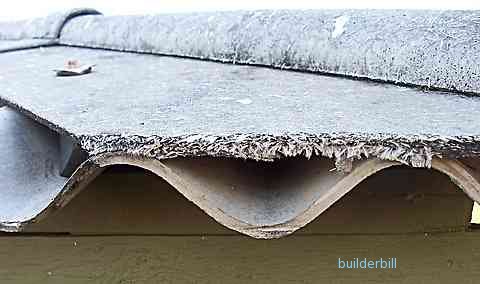 What is asbestos?
What is asbestos?Asbestos is a family of naturally occurring silica compounds (similar to, but not the same as, the silica of window glass and computer chips). These substances form fibers with varying shapes and sizes and are found throughout the earth. There are three commonly available types of asbestos; chrysotile (white asbestos), amosite (brown asbestos), and crocidolite (blue asbestos). All three have been associated with cancerous and non-cancerous lung disease.
Asbestos has been used frequently in a variety of building materials for insulation and as a fire retardant. Today, it is found most commonly in older homes - in pipes, furnaces, roof shingles, millboard, textured paints, coating materials, and floor tiles.
What are the types of asbestos-related lung disease?
Lung disease from exposure to asbestos can be divided into three main types: 1) asbestosis, 2) disease of the lining of the lung (pleura), and 3) lung cancer.
Asbestosis
Asbestosis is a process of widespread scarring of the lungs.
Disease of the lining of the lungs
Disease of the lining of the lungs, called the pleura, has a variety of signs and symptoms and is the result of inflammation and the hardening (calcification) and/or thickening of the lining tissue.
Lung cancer
either of the internal portions of the lungs or the outer lining (pleura).
0 komentar:
Posting Komentar